General News
Fresh Tracks
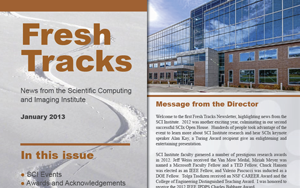 Welcome to the first Fresh Tracks Newsletter, highlighting news from the SCI Institute. 2012 was another exciting year, culminating in our second successful SCIx Open House. Hundreds of people took advantage of the event to learn more about SCI Institute research and hear SCIx keynote speaker Alan Kay, a Turing Award recipient give an enlightening and entertaining presentation. SCI Institute faculty garnered a number of prestigious research awards in 2012. Jeff Weiss received the Van Mow Medal, Miriah Meyer was named a Microsoft Faculty Fellow and a TED Fellow, Chuck Hansen was elected as an IEEE Fellow, and Valerio Pascucci was inducted as a DOE Fellow. Tolga Tasdizen received an NSF CAREER Award and the College of Engineering Distinguished Teaching Award. I was honored to receive the 2012 IEEE IPDPS Charles Babbage Award.
Welcome to the first Fresh Tracks Newsletter, highlighting news from the SCI Institute. 2012 was another exciting year, culminating in our second successful SCIx Open House. Hundreds of people took advantage of the event to learn more about SCI Institute research and hear SCIx keynote speaker Alan Kay, a Turing Award recipient give an enlightening and entertaining presentation. SCI Institute faculty garnered a number of prestigious research awards in 2012. Jeff Weiss received the Van Mow Medal, Miriah Meyer was named a Microsoft Faculty Fellow and a TED Fellow, Chuck Hansen was elected as an IEEE Fellow, and Valerio Pascucci was inducted as a DOE Fellow. Tolga Tasdizen received an NSF CAREER Award and the College of Engineering Distinguished Teaching Award. I was honored to receive the 2012 IEEE IPDPS Charles Babbage Award.Dongbin Xiu Joins the Scientific Computing and Imaging Institute as a Professor of Mathematics
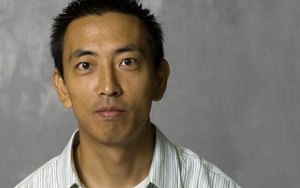 Dongbin Xiu has joined the University of Utah's Scientific Computing and Imaging (SCI) Institute as a Professor of Mathematics. The SCI Institute focuses on solving important problems in biomedicine, science, and engineering using computation and is an international research leader in the areas of scientific computing, visualization, and image analysis.
Dongbin Xiu has joined the University of Utah's Scientific Computing and Imaging (SCI) Institute as a Professor of Mathematics. The SCI Institute focuses on solving important problems in biomedicine, science, and engineering using computation and is an international research leader in the areas of scientific computing, visualization, and image analysis.
CMBBE 2013 Conference
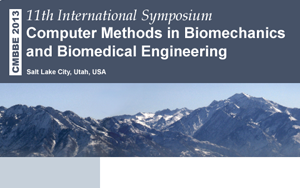 11th INTERNATIONAL SYMPOSIUM ON COMPUTER METHODS IN BIOMECHANICS AND BIOMEDICAL ENGINEERING http://cmbbe13.sci.utah.edu
11th INTERNATIONAL SYMPOSIUM ON COMPUTER METHODS IN BIOMECHANICS AND BIOMEDICAL ENGINEERING http://cmbbe13.sci.utah.eduApril 3-7, 2013 Salt Lake City, Utah, USA
Chair: Jeffrey Weiss, University of Utah
Co-Chair: Gerard Ateshian, Columbia University
SCIx 2012
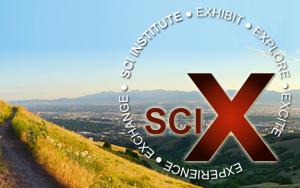 The Scientific Computing and Imaging (SCI) Institute hosted the second annual SCIx Open House on Tuesday, November 13th. At SCIx, the SCI Institute put its cutting-edge work on display for the public accompanied by a keynote presentation from Alan Kay. Alan Kay is a pioneer in object oriented programming and personal computing who conceived laptops years before their realization and received the 2003 Turing Award. This year’s open house presented more stunning and innovative research.
The Scientific Computing and Imaging (SCI) Institute hosted the second annual SCIx Open House on Tuesday, November 13th. At SCIx, the SCI Institute put its cutting-edge work on display for the public accompanied by a keynote presentation from Alan Kay. Alan Kay is a pioneer in object oriented programming and personal computing who conceived laptops years before their realization and received the 2003 Turing Award. This year’s open house presented more stunning and innovative research.
MRL Release CT Arthrogram of Hip Datasets
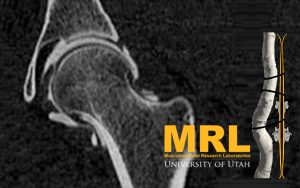 In a recent study, researchers at the Musculoskeletal Research Laboratories (MRL) examined the mechanics of cartilage in the normal hips of 10 healthy adult volunteers. Now they have made the de-identified CT arthrogram datasets available online for other researchers to download. The datasets were acquired as part of a research project on the biomechanics of hip dysplasia (NIH #R01AR053344). Healthy young adults consented to receive a CT arthrogram of one hip joint. The image datasets include the pelvis and proximal femur. One hip joint has been injected with a contrast agent to facilitate delineation of intra-articular cartilage layers. The contralateral hip joint is also visible. The datasets along with details about the subjects, CT scan settings, and image resolution can be found on the MRL Lab Data Archive.
In a recent study, researchers at the Musculoskeletal Research Laboratories (MRL) examined the mechanics of cartilage in the normal hips of 10 healthy adult volunteers. Now they have made the de-identified CT arthrogram datasets available online for other researchers to download. The datasets were acquired as part of a research project on the biomechanics of hip dysplasia (NIH #R01AR053344). Healthy young adults consented to receive a CT arthrogram of one hip joint. The image datasets include the pelvis and proximal femur. One hip joint has been injected with a contrast agent to facilitate delineation of intra-articular cartilage layers. The contralateral hip joint is also visible. The datasets along with details about the subjects, CT scan settings, and image resolution can be found on the MRL Lab Data Archive.For more details see the MRL website - "CT Arthrogram Image Data of the Hip"
Utah-Led Group Gets $15M from Army to Design New Materials
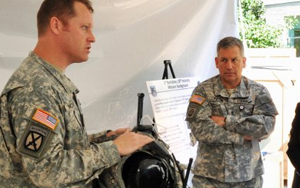 May 7, 2012 – U.S. soldiers are increasingly weighed down by batteries to power weapons, detection devices and communications equipment. So the Army Research Laboratory has awarded a University of Utah-led consortium almost $15 million to use computer simulations to help design materials for lighter-weight, energy efficient devices and batteries.
May 7, 2012 – U.S. soldiers are increasingly weighed down by batteries to power weapons, detection devices and communications equipment. So the Army Research Laboratory has awarded a University of Utah-led consortium almost $15 million to use computer simulations to help design materials for lighter-weight, energy efficient devices and batteries."We want to help the Army make advances in fundamental research that will lead to better materials to help our soldiers in the field," says computing Professor Martin Berzins, principal investigator among five University of Utah faculty members who will work on the project. "One of Utah’s main contributions will be the batteries."
Of the five-year Army grant of $14,898,000, the University of Utah will retain $4.2 million for research plus additional administrative costs. The remainder will go to members of the consortium led by the University of Utah, including Boston University, Rensselaer Polytechnic Institute, Pennsylvania State University, Harvard University, Brown University, the University of California, Davis, and the Polytechnic University of Turin, Italy.
U.S. Energy Secretary Steven Chu Announces SDAV
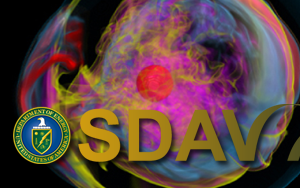 Energy Secretary Steven Chu announced a $25 million five-year initiative to help scientists better extract insights from today’s increasingly massive research datasets, the Scalable Data Management, Analysis, and Visualization (SDAV) Institute. SDAV will be funded through DOE’s Scientific Discovery through Advanced Computing (SciDAC) program and led by Arie Shoshani of Lawrence Berkeley National Laboratory (Berkeley Lab). As one of the nation’s leading funders of basic scientific research, the Department of Energy Office of Science has a vested interested in helping researchers effectively manage and use these large datasets.
Energy Secretary Steven Chu announced a $25 million five-year initiative to help scientists better extract insights from today’s increasingly massive research datasets, the Scalable Data Management, Analysis, and Visualization (SDAV) Institute. SDAV will be funded through DOE’s Scientific Discovery through Advanced Computing (SciDAC) program and led by Arie Shoshani of Lawrence Berkeley National Laboratory (Berkeley Lab). As one of the nation’s leading funders of basic scientific research, the Department of Energy Office of Science has a vested interested in helping researchers effectively manage and use these large datasets.
U Receives $2.9 Million for Down Syndrom Research
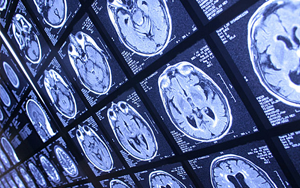 University of Utah Receives $2.9 Million Grant for Groundbreaking Down Syndrome Research. Studies including Utah families will provide insights into the human brain and treatment strategies for mental disability SALT LAKE CITY – A multidisciplinary team of University of Utah investigators has received a grant for innovative research that will shed new light on the genes that cause Down syndrome (DS), as well as the defects of brain development and function that lead to intellectual disability. The $2.96 million grant co-funded by the Eunice Kennedy Shriver National Institute of Child Health and Human Development and the National Institute of Neurological Disorders and Stroke at the National Institutes of Health (NIH) will support cross-disciplinary research that studies not only genes and brain structure, but also the circuitry and chemical signals within the brain that lead to the development of DS.
University of Utah Receives $2.9 Million Grant for Groundbreaking Down Syndrome Research. Studies including Utah families will provide insights into the human brain and treatment strategies for mental disability SALT LAKE CITY – A multidisciplinary team of University of Utah investigators has received a grant for innovative research that will shed new light on the genes that cause Down syndrome (DS), as well as the defects of brain development and function that lead to intellectual disability. The $2.96 million grant co-funded by the Eunice Kennedy Shriver National Institute of Child Health and Human Development and the National Institute of Neurological Disorders and Stroke at the National Institutes of Health (NIH) will support cross-disciplinary research that studies not only genes and brain structure, but also the circuitry and chemical signals within the brain that lead to the development of DS.
The Art of Science
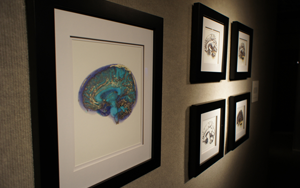 February 11, 2012 - April 7, 2012
February 11, 2012 - April 7, 2012Art Talk Thursday, March 15th, 6-7pm.
Kimball Art Center, 638 Park Avenue, Park City, UT 84060
Science and art come together this month at the Kimball Art Center’s Badami Gallery. SCI Institute: The Art of Science is on display through April 7th, 2012. Some of the world’s most recognized scientists in the computing and imaging field have their ground breaking work on display.
As internationally acclaimed leaders in scientific visualization, researchers at the Scientific Computing and Imaging Institute at the University of Utah work constantly to develop new and better ways to visualize and communicate the results of scientific inquiry.
Although their visual designs are created to serve science, many of SCI’s visualizations of computer simulations of combustion or bioelectric activity in the heart and brain, or of data ranging from a galactic scale down to a cellular level, can also be viewed as works of art.
Utah Image Processing Group Plays Key Role in Autism Research
 Brain Imaging Differences Evident at 6 Months in High-Risk Infants Who Later Develop Autism A new study led by the University of North Carolina at Chapel Hill found significant differences in brain development starting at age 6 months in high-risk infants who later develop autism, compared to high-risk infants who did not develop autism.
Brain Imaging Differences Evident at 6 Months in High-Risk Infants Who Later Develop Autism A new study led by the University of North Carolina at Chapel Hill found significant differences in brain development starting at age 6 months in high-risk infants who later develop autism, compared to high-risk infants who did not develop autism.The study was published online on Feb. 17 at AJP in Advance, a section of the website of the American Journal of Psychiatry. Its results are the latest from the ongoing Infant Brain Imaging Study (IBIS) Network, which is funded by the National Institutes of Health and headquartered at UNC. Piven received an NIH Autism Centers of Excellence (ACE) program network award for the IBIS Network in 2007. ACE networks consist of researchers at many facilities in locations throughout the country, all of whom work together on a single research question.
Supercomputing 2012 to be held in SLC
 For 24 years, SC has been at the forefront in gathering the best and brightest minds in supercomputing together, with our unparalleled technical papers, tutorials, posters and speakers. SC12 will take a major step forward not only in supercomputing, but in super-conferencing, with everything designed to make the 2012 conference the most ‘you’ friendly conference in the world. We’re streamlining conference information and moving to a virtually real-time method of determining technical program thrusts. No more pre-determined technical themes picked far in advance. Through social media, data mining, and active polling, we’ll see which technical interests and issues emerge throughout the year, and focus on the ones that interest you the most. The conference welcomes you to participate in the breadth of conference offerings, including:
For 24 years, SC has been at the forefront in gathering the best and brightest minds in supercomputing together, with our unparalleled technical papers, tutorials, posters and speakers. SC12 will take a major step forward not only in supercomputing, but in super-conferencing, with everything designed to make the 2012 conference the most ‘you’ friendly conference in the world. We’re streamlining conference information and moving to a virtually real-time method of determining technical program thrusts. No more pre-determined technical themes picked far in advance. Through social media, data mining, and active polling, we’ll see which technical interests and issues emerge throughout the year, and focus on the ones that interest you the most. The conference welcomes you to participate in the breadth of conference offerings, including:




